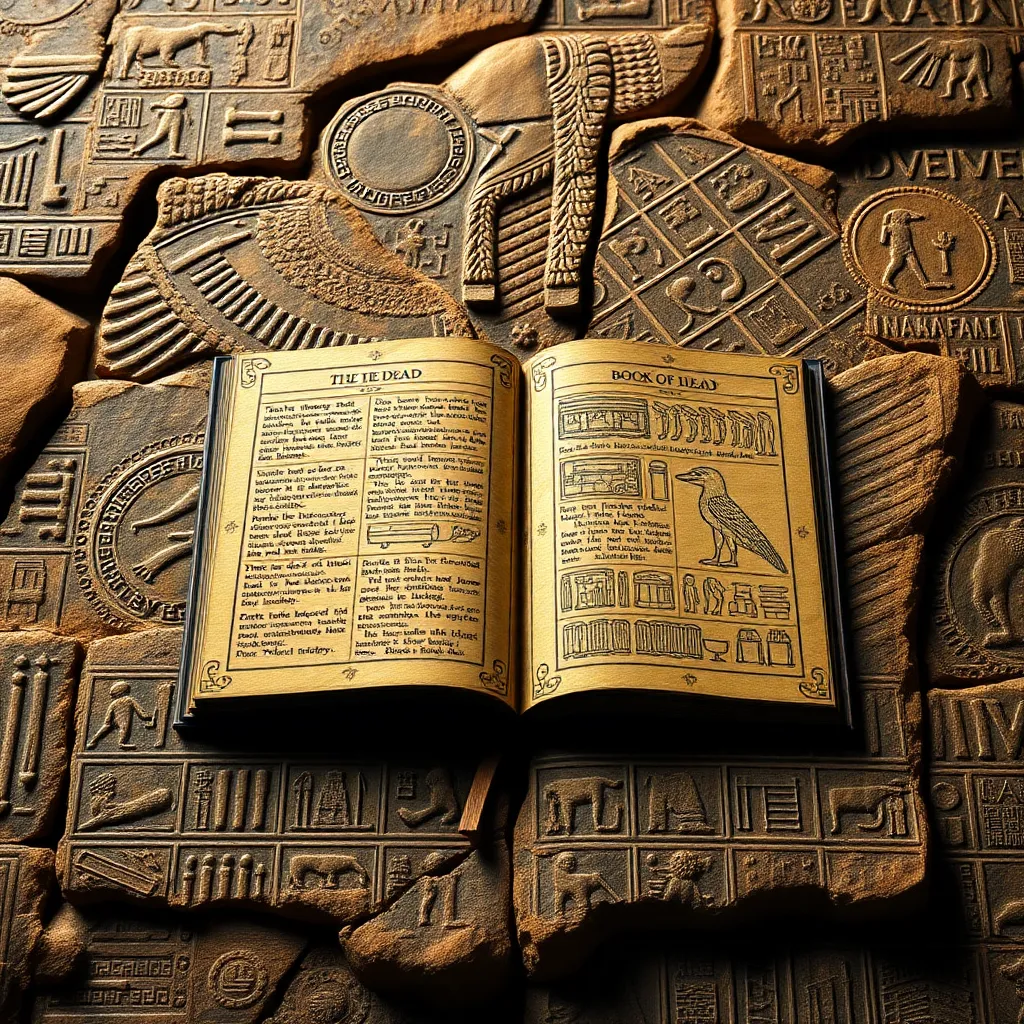The Book of the Dead: Its Role in Art and Funerary Practices
I. Introduction
The Book of the Dead is one of the most significant texts from ancient Egypt, serving as a guide for the deceased in the afterlife. This funerary text emerged during the New Kingdom period and has captivated historians, archaeologists, and enthusiasts for centuries.
The importance of the Book of the Dead in ancient Egyptian culture cannot be overstated. It was believed to provide the deceased with protection, guidance, and the necessary spells to navigate the afterlife successfully. This article aims to explore the various dimensions of the Book of the Dead, including its historical context, content, artistic representations, and its influence on funerary practices, both in ancient times and today.
II. Historical Context of the Book of the Dead
The origins of the Book of the Dead can be traced back to the Pyramid Texts and Coffin Texts, which were earlier funerary writings. These texts evolved over time, leading to the creation of the Book of the Dead during the 16th century BCE.
Key historical periods that influenced the Book of the Dead include:
- The Old Kingdom: Introduction of Pyramid Texts.
- The Middle Kingdom: Development of Coffin Texts.
- The New Kingdom: Finalization of the Book of the Dead.
Notable versions and manuscripts of the Book of the Dead exist, including the Papyrus of Ani, which is one of the most famous examples, showcasing the text’s elaborate illustrations and spells.
III. The Content of the Book of the Dead
The Book of the Dead is structured in a series of spells, each designed to assist the deceased in the afterlife. These spells are often organized into chapters, with each chapter serving a distinct purpose.
Key spells and their significance include:
- Spell 125: The Weighing of the Heart, where the heart is weighed against the feather of Ma’at to determine the soul’s fate.
- Spell 30: An offering formula to provide sustenance in the afterlife.
- Spell 17: A spell of transformation that allows the deceased to become a divine being.
Variations in content across different copies of the Book of the Dead are common, as individuals would customize their texts based on personal beliefs, social status, and the specific deities they wished to appease.
IV. Artistic Representations in the Book of the Dead
The artistic representations found in the Book of the Dead are as significant as the text itself. Common themes and motifs include:
- Scenes of the afterlife, depicting the deceased in various settings.
- Interactions with gods, particularly Osiris, the god of the afterlife.
- Symbolic representations of protection, such as the use of scarabs.
Iconography and symbolism play a crucial role in these illustrations. For example, the ankh symbol represents life, while the djed pillar symbolizes stability. These images are meticulously crafted to convey deeper meanings.
Case studies of notable artworks include:
- The Papyrus of Ani: Richly illustrated with vibrant colors and intricate details.
- The Book of the Dead of Hunefer: Features a dramatic depiction of the Weighing of the Heart.
V. Funerary Practices and the Book of the Dead
The Book of the Dead played an integral role in ancient Egyptian funerary practices. It was often included in burial chambers as a guide for the deceased.
Its role in rituals and burial customs included:
- Placement of the text in tombs to ensure the deceased had access to its spells.
- Recitation of spells during the funeral rites to assist the deceased’s journey.
The integration of the Book of the Dead with other funerary texts and artifacts, such as amulets and canopic jars, illustrates the complexity of ancient Egyptian beliefs about death and the afterlife.
Moreover, the text significantly influenced the journey to the afterlife, providing a roadmap for the deceased to navigate challenges and reach their ultimate destination in the Field of Reeds.
VI. The Book of the Dead in Modern Interpretation
The impact of the Book of the Dead extends beyond ancient Egypt into contemporary art and literature. Modern artists and writers draw inspiration from its themes of death, rebirth, and the afterlife.
Academic and popular cultural references to the Book of the Dead are abundant, with mentions in films, books, and exhibitions highlighting its timeless relevance.
Preservation and study of the text continue today, with ongoing research aimed at understanding its historical context, variations, and interpretations. Digital archives and translations have made the text more accessible to a global audience.
VII. Cultural Significance and Legacy
The Book of the Dead holds a unique place in the context of world religions, often compared to texts from other cultures that address the afterlife, such as the Tibetan Book of the Dead and the Bible’s Revelation.
Its influence on subsequent funerary practices globally can be seen in various cultures that incorporate texts, rituals, and artifacts to honor the deceased.
The ongoing fascination with the Book of the Dead in modern society is evident in its portrayal in media, literature, and art, reflecting humanity’s enduring curiosity about death and the afterlife.
VIII. Conclusion
In summary, the Book of the Dead is a remarkable testament to ancient Egyptian beliefs about life, death, and the afterlife. Its historical context, diverse content, artistic representations, and role in funerary practices showcase its significance in ancient Egyptian culture.
The enduring legacy of the Book of the Dead continues to inspire and intrigue, bridging the gap between ancient and modern understandings of death and the afterlife.
Ultimately, the Book of the Dead remains a vital part of our exploration of art, culture, and the human experience, inviting us to reflect on our beliefs about what lies beyond.




